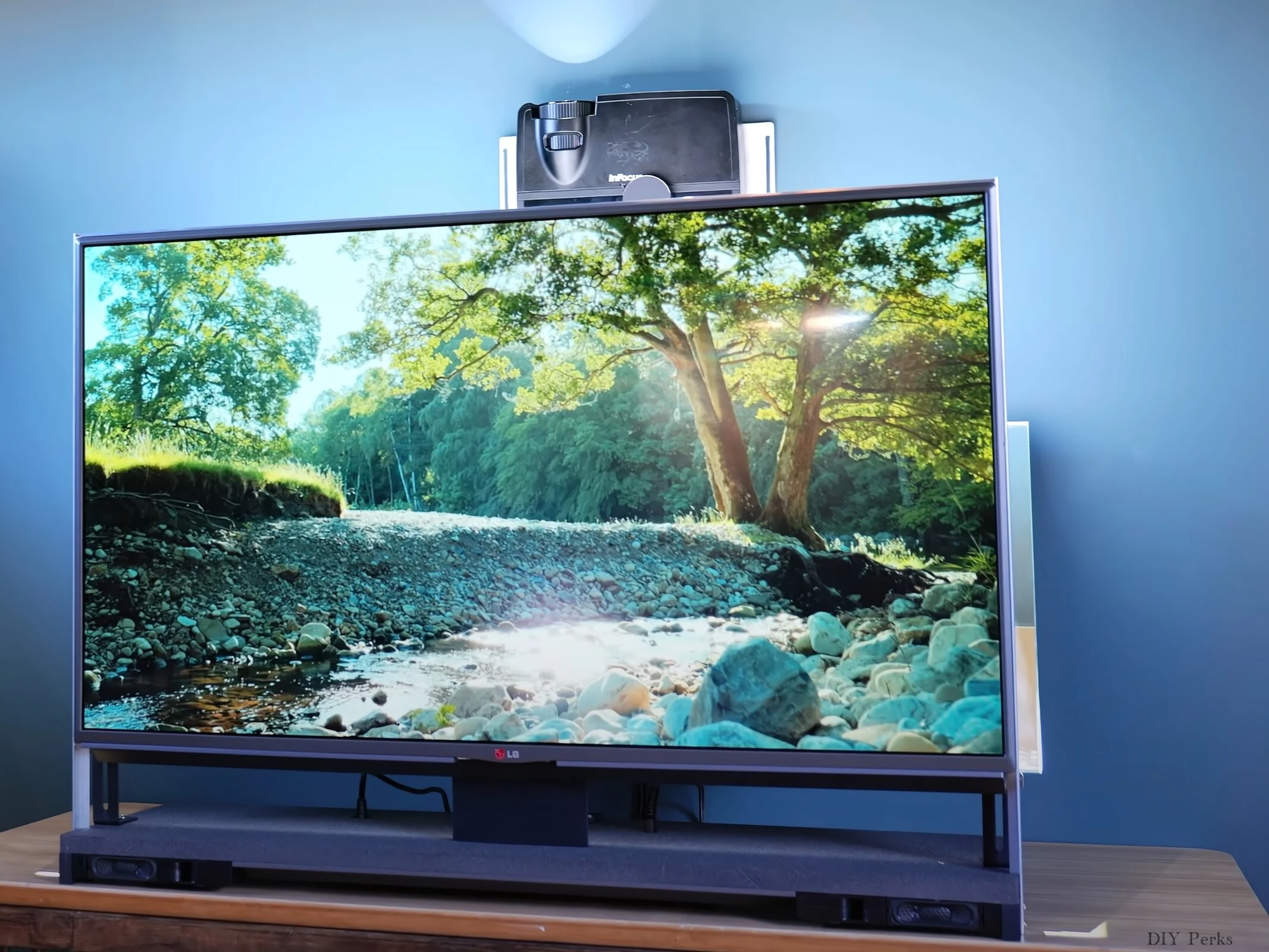Key Takeaways
1. Matthew Perks transforms e-waste into high-tech gadgets, showcasing creative DIY projects on his YouTube channel.
2. He dismantles an old LG LCD TV and modifies a DLP projector to create a new display system.
3. The projector serves as a more accurate light source for the LCD, improving picture quality significantly.
4. Matthew uses OBS Studio to adjust picture settings for optimal viewing experience.
5. The final DIY television rivals expensive OLED models in image quality, highlighting the potential of upcycling e-waste.
Matthew Perks, the creator behind the DIY Perks YouTube channel, is well-known for his creative projects that turn what seems like useless e-waste into amazing high-tech gadgets. In his newest video, he shows how to create picture quality that rivals pricey OLED TVs by merging an old broken LCD screen with a discarded projector.
The Dismantling Process
To start, the YouTuber carefully took apart an eleven-year-old broken LG LCD television, paying close attention to removing its damaged backlight. The usable LCD panel was then prepped with great care for the conversion. Additionally, some changes were necessary for an old DLP projector so it could deliver a bright and suitable backlight, which included taking out the color wheel. He then pieced together the parts, using aluminum profiles and MDF sheets to build a solid frame that would hold the display’s LCD panel and its electronics. A standout feature of this project is how the projector serves as a light source, providing much more accurate lighting for the LCD panel than local dimming technologies could ever manage. Matthew adjusted the picture settings using the open-source program OBS Studio to enhance image quality for the best viewing experience. The final result looks like a rear-projection television.
The Impressive Outcome
The result is stunning. The display can produce rich blacks, vibrant colors, and impressive contrast. The video on the DIY Perks channel shows that this DIY television can easily match current OLED models in image quality, all made possible with parts that can essentially be classified as e-waste—truly a fantastic example of upcycling.
Source:
Link


Leave a Reply